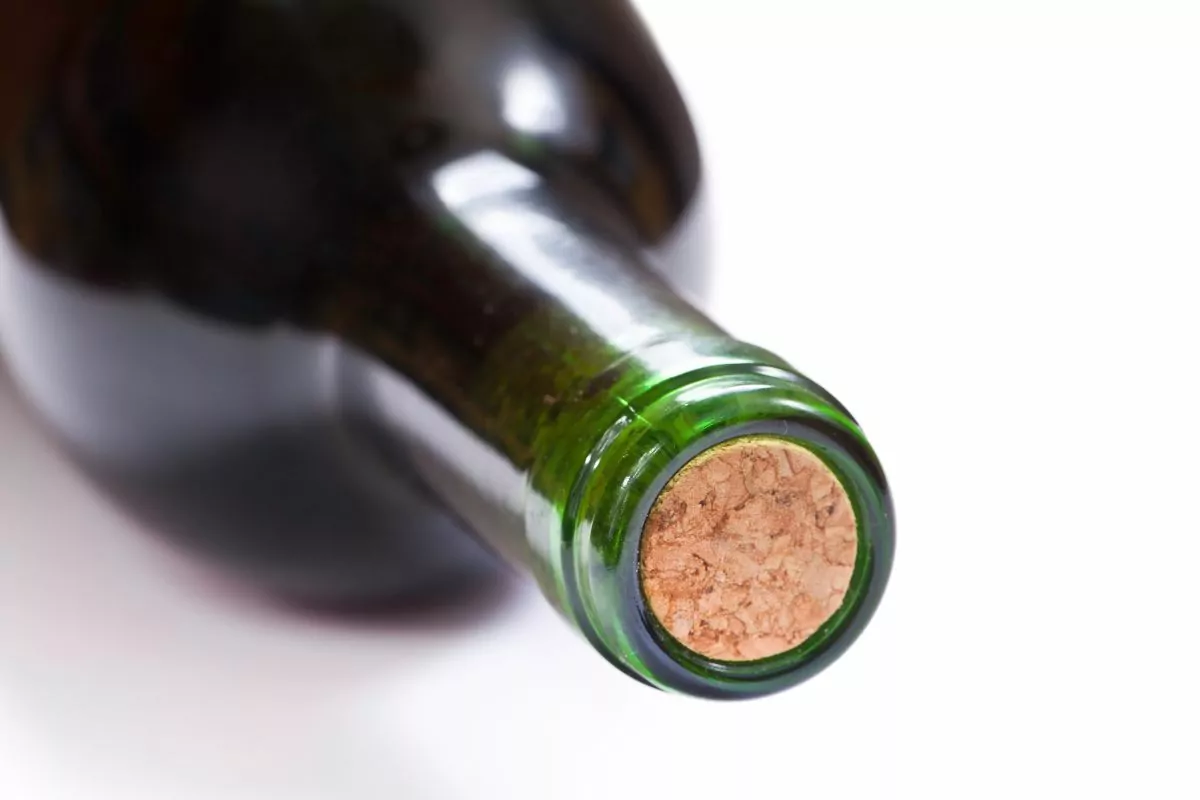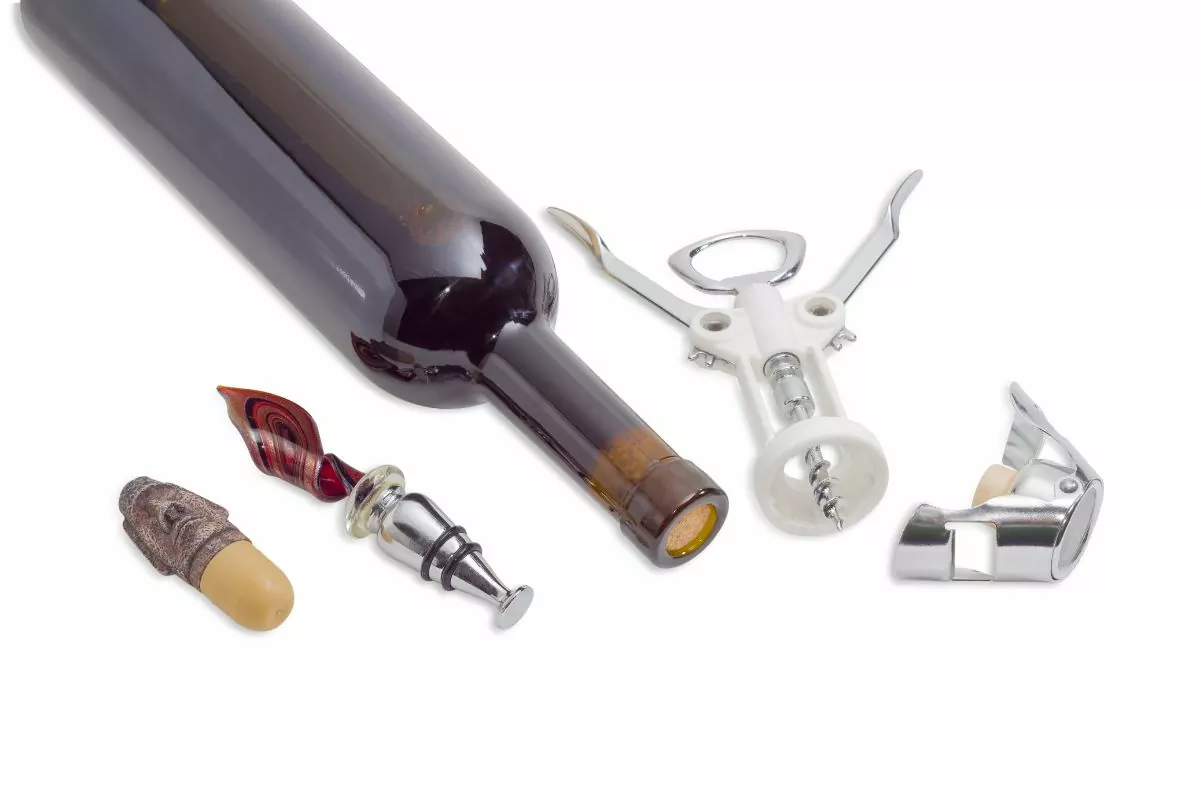Opening a bottle of wine is often associated with celebration and enjoyment, but sometimes, it’s not always possible to finish a bottle in one go.

Wine bottles need to be sealed closed once more to keep the wine fresh and the easiest way to do this is with the cork.
However, corks can be a little delicate at times so what can you do if your cork breaks? Maybe you’ve discarded the cork because you expected the bottle to be finished and now you’re left with no way to close your wine bottle.
Don’t worry, because there are alternative methods to close a wine bottle without a cork. In this article, we will guide you through a variety of techniques to seal your wine bottle effectively, even if you don’t have the cork anymore.
Some of these methods use regular household objects whereas others use specialized equipment that you might need to purchase. We’ll also look at the importance of closing an opened wine bottle.
Why Is Closing A Wine Bottle So Important?
Wine can stay fresh in a sealed bottle for years, but as soon as it is opened the clock starts ticking. Opening a wine bottle exposes the wine to oxygen and although this isn’t a bad thing to begin with, it will start to become a problem.
Many types of wine do need to sit for around an hour before they are served. A little bit of oxygen in the wine will help to open up the flavors of the wine and this is especially important with young wines.
However, this process of oxidation doesn’t stop once the wine has reached its peak. Instead, the oxygen will continue to work on the wine and will start to rob the wine of its fresh flavors.
Wine that has been opened has a high chance of developing acetic acid bacteria as well. This bacteria eats through the alcohol content in the wine and will leave a vinegary smell and taste behind.
This is why it’s important to seal your wine once it has been opened. Sealing the wine bottle will prevent any more oxygen from getting into your wine and will keep it fresh for the next time you decide to drink it!
Closing An Opened Wine Bottle Without A Cork
Now that we know why closing an opened wine bottle is so important, let’s look at some methods for preventing oxidation.
Use The Broken Cork
If your cork is broken, you can actually still use the broken cork to reseal the bottle! Admittedly, this isn’t very easy at times as depending on how the cork is broken, it might not fit neatly into the bottle or reach down far enough.
You should be careful of how the cork has broken as well. If you have a couple of larger chunks of cork it can be easy and safe to recork your bottle but if the cork is in smaller pieces, you may need to be more careful.
To ensure that no pieces of cork fall into your wine, you can use a little wax paper and wrap it around the part of the cork that goes into the wine.
This will prevent the cork from falling apart and will also help it to slide into the bottle more easily.
Use A Bottle Stopper

Your best option for closing an open wine bottle so that oxidation doesn’t occur is to use a bottle stopper.
These little tools are easy to find and are reasonably priced and they work to seal a wine bottle.
There are many different types of bottle stoppers but they generally share the same method of sealing your wine. They usually have a cork made of silicone that sits in the neck of your bottle and forms an airtight seal.
Some stoppers are simply pulled out whereas others have a more robust open and close system.
Having a bottle stopper or two in your kitchen is always a good idea. They can be reused whenever you need to seal a wine bottle and will keep your wine fresh.
Use A Wine Preserver
If you’re a serious wine drinker and have the budget, then a wine preserver will save your wine! These gadgets can be used whenever you open a bottle of wine and will ensure your wine stays fresh.
Simply insert the wine preserve as soon as the wine is opened and keep it in place as you both pour or store your wine.
Some of the best wine preservers can keep your wine fresh for weeks. Whether you’re drinking the wine as soon as it was opened or several weeks later, it will taste the same!
Many have an aerator as well so you can aerate your wine immediately instead of waiting an hour for an opened bottle to aerate naturally.
Cover The Opening With Wrap
The important part of closing a wine bottle is to block the neck so that no oxygen can get inside the bottle. A quick but inelegant way of achieving this is by using plastic wrap or aluminum foil.
Cover the bottle opening with your plastic wrap and use a rubber band wrapped around the neck to keep the wrap in place.
If you’re serving the wine to guests you may not want to use this method as it doesn’t look very good, but it will do the job!
Use Another Sealed Container
If you can’t seal your wine bottle, then why not use another sealed container instead? There are many different types of containers on the market that can keep the contents free from oxygen and these can be used for wine as well.
For example, try a sealed water bottle or similar vacuum-sealed container to keep your wine fresh. These won’t prevent oxidation forever, but you can keep your wine fresh for a couple of days in a container such as these.
Use An Air-Tight Container
There are many air-tight containers that aren’t specifically designed for liquids. These might look odd when filled with wine, but they will keep your wine fresh for a few days before you drink the rest of the bottle!
Consider using a jam jar or something similar as a stop-gap solution. These containers are usually sealed tight so if you need to store them on their side, you can do so safely without your wine leaking.
Again, you might not want to serve guests from a container like this but it will work!
Paper Towels
If you’re completely out of options, you can use paper towels. All you need to do is stuff the open bottle with as many paper towels as you can fit.
This method has a few limitations, however. It won’t keep 100 percent of the oxygen out of the bottle so the wine will suffer some oxidation.
If you consume the wine over the next day or two though, you may not notice much of a difference.
You also cannot lie the bottle on its side. If you do, the paper towels will suck up your wine until they become completely saturated and the wine will begin to leak out.
Use Zip Lock Bags
This is another out-of-options fix! Zip-lock bags are designed to keep air out and this makes them an unconventional but suitable solution for an opened wine bottle.
Simply pour your wine into a zip-lock bag and make sure that you seal it correctly so that there is no excess air inside. Be careful when you pour the wine out of your zip-lock bag and into a glass as this can be tricky to manage.
Should Open Wine Be Refrigerated?
White wine is well-known for tasting great when chilled, so putting an open bottle of white wine in the fridge is only natural. Red wine, however, is traditionally served at room temperature as this helps the flavors of the red wine develop better.
If your opened bottle of wine is a bottle of red, we still recommend placing this in the fridge. Chilling the wine will slow down the oxidation process so it will help to keep your wine fresher for longer.
This can be very important with some of the more make-shift methods in this list.
When you’re ready to drink your red wine, remove it from the fridge and allow it to reach room temperature once more before serving.
If it is a light-bodied red though, you can serve this slightly chilled as some of these red wines taste delicious with a little chill.
Final Thoughts
In this article, we looked at methods for closing an opened wine bottle without a solid cork.
Some of the methods use regular household items such as plastic wrap, but others do require special equipment such as bottle stoppers or wine preservers.
- Why Does Wine Taste Better With Age? - June 14, 2023
- What Does It Mean When A Bottle Of Wine Is Corked? - June 14, 2023
- Wine Fridge Vs Wine Cellar – Which One Should You Choose? - June 14, 2023
